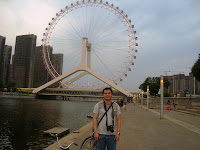Dr. Jose Rizal @ 150 on Stamps

In line with 150th birth centenary of our National Hero, Dr. Jose Rizal, several tourism and philatelic related activities are ongoing. The Department of Tourism (DoT) opened the "Lakbay Jose Rizal @ 150," a year-long tour that allows tourists to retrace the national hero's steps by visiting as many as 27 Rizal sites in the country. Participants will be given "Lakbay passports" and a spec al stamp for every Rizal site they visit. The National Historical Commission of the Philippines, in partnership with the Philippine Postal Corporation , also held a stamp design contest entitled “150TH BIRTH ANNIVERSARY OF JOSE RIZAL STAMP DESIGN CONTEST” with the theme Rizal: Haligi ng Bayan. The contest was participated by students, amateurs and professionals and judging was held last March 1, 2011 at the NHCP Building. Dir. Jeremy Barns of the National Museum ; Dr. Ngo Tiong Tak from Philippine Postal Corporation, Mr. Danilo Pangan from the National Commission fo...






